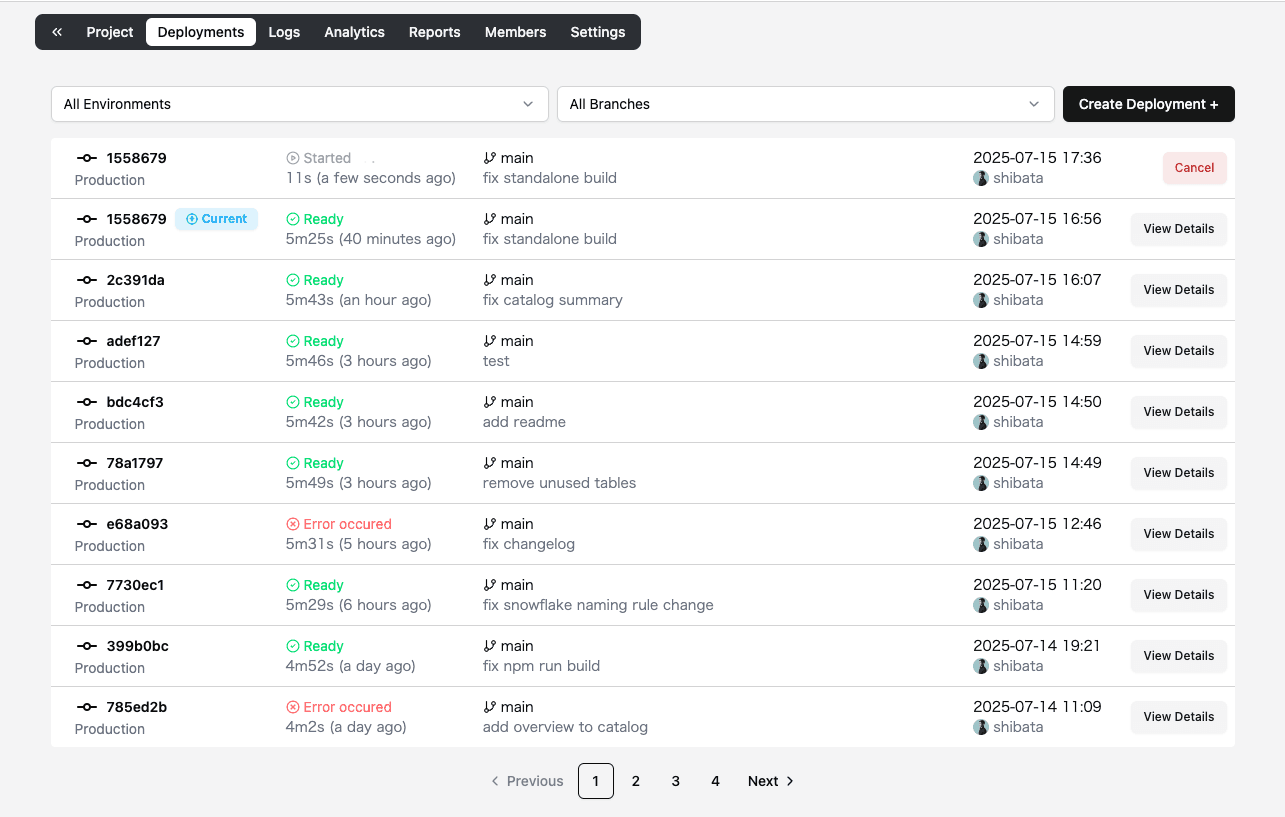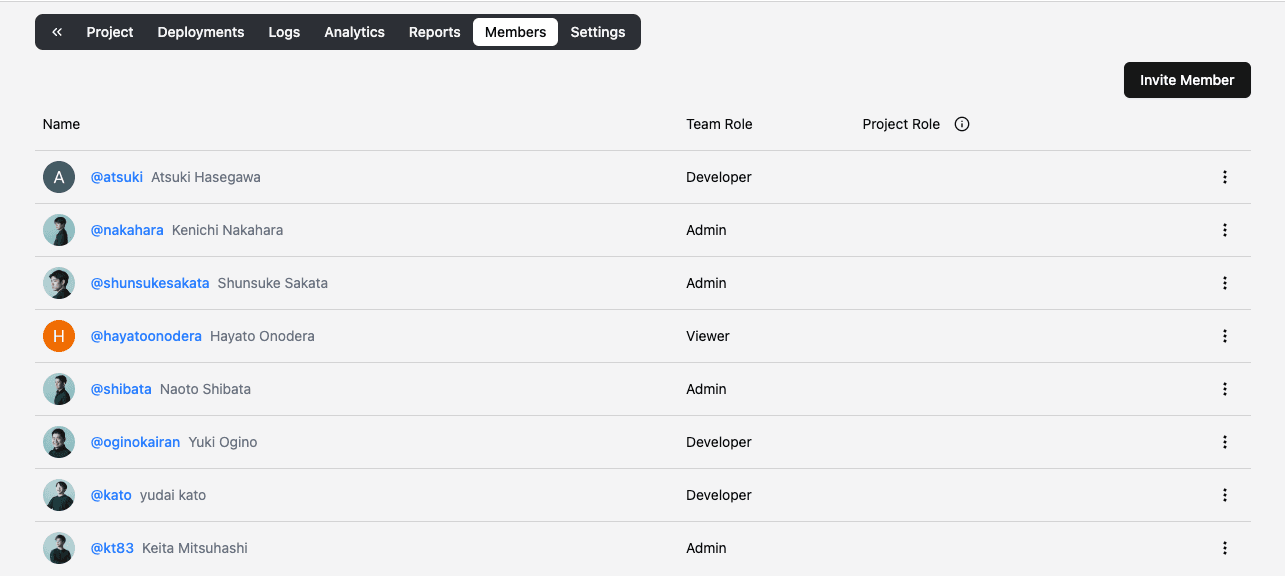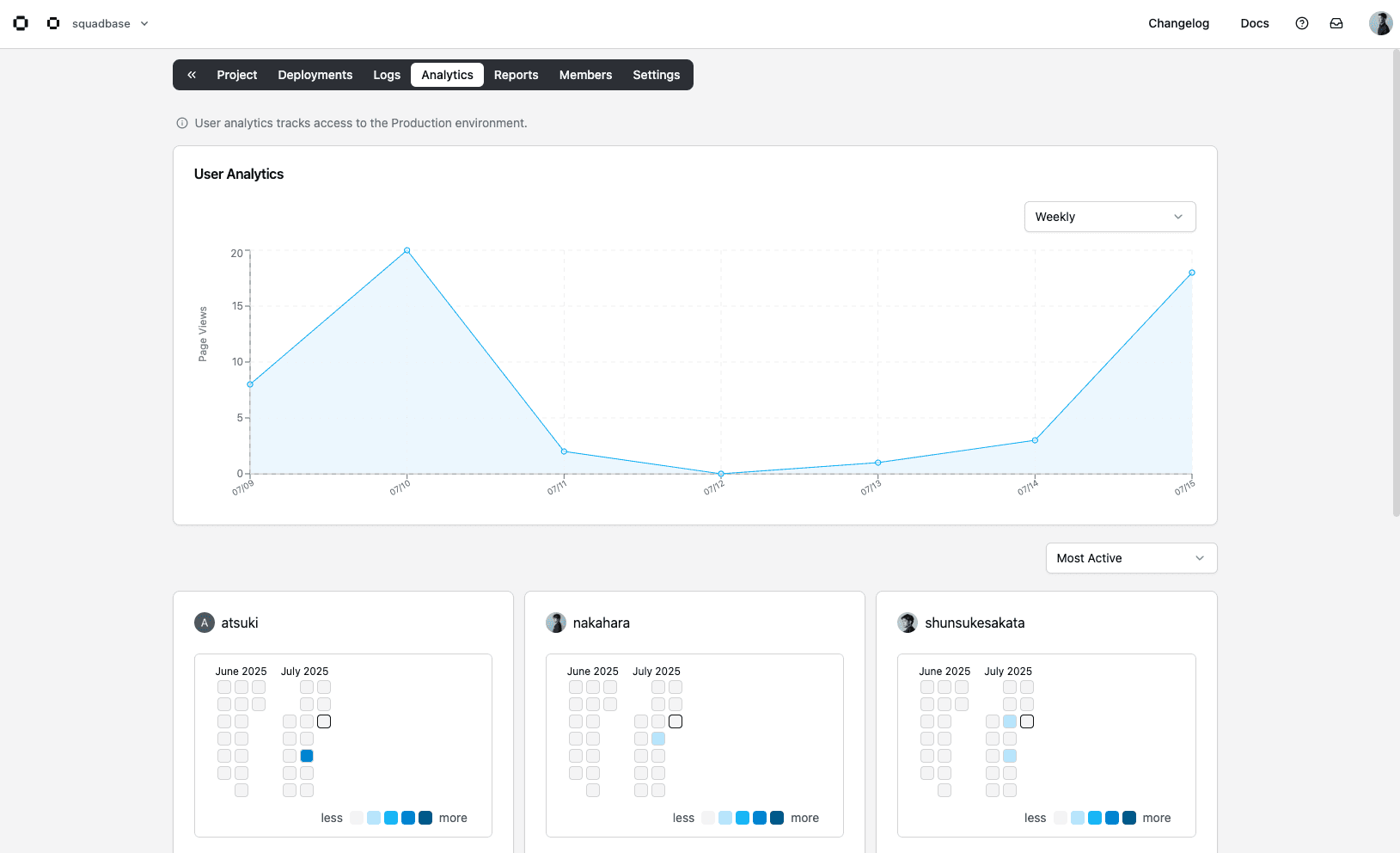8. Team Sharing and Maintenance
The Need for Secure Deployment Environments
By utilizing vibe coding, we've lowered the barriers to code-based construction. However, setting up production environments typically requires complex configurations for network infrastructure, security, and other aspects of AWS, Azure, etc.
For organizational data utilization, we need to move beyond individual development environments (GitHub Codespaces "localhost") to production environments where multiple members can safely access.
What's needed for organizational data utilization are precisely the requirements for secure deployment environments:
- User authentication and proper access permission management
- Log collection to understand usage patterns and who accessed which data
- Log infrastructure for continuous app improvement
- Mechanisms for disaster recovery
To solve these challenges, platforms like Squadbase can be utilized. By leveraging Squadbase, you can safely share apps built with vibe coding only with team members, enabling continued rapid internal app development.
Simple Deployment with Squadbase
Squadbase is a platform that makes continuous deployment easy through GitHub integration. It requires no complex infrastructure setup and completes deployment in just a few steps. A free plan is available for sharing vibe-coded apps with your team.
The free plan has the following limitations:
- Maximum 5 applications
- Maximum 5 team members
- 300 minutes/month build time
- Up to $5/month computing costs (equivalent to 1 million requests)
These limitations are sufficient for small teams or proof of concepts (PoC).
Let's set up Squadbase. Visit the Squadbase official site and click "Sign in with GitHub." You can easily create an account through GitHub authentication.
Step 1: squadbase.yml Configuration
Create a configuration file in the project root directory.
squadbase.yml configuration example:
version: '1'
build:
framework: streamlit
runtime: python3.11
package_manager: uv
entrypoint: app.py- framework: Specify Streamlit. Squadbase supports frameworks other than Streamlit, including Next.js and FastAPI.
- runtime: Specify the Python version you're using.
- package_manager: Specify the package manager you're using.
- entrypoint: Specify the application's main file (app.py). If using something other than app.py like main.py, change accordingly.
Step 2: Repository Import
From the Squadbase dashboard, select and import your GitHub repository. In GitHub integration settings, grant Squadbase access permissions to the specified repository. For security, we recommend granting only the minimum necessary permissions.
If you get stuck with GitHub settings, refer to the official documentation.
Once repository import is complete, app deployment starts automatically. Initial deployment usually completes within 5 minutes, so wait for deployment to finish.

Step 3: Team Member Invitation and Access Permission Settings
From the Squadbase dashboard, invite team members and set appropriate access permissions. Team member invitation can be done from the Squadbase dashboard.

Step 4: Confirming Automatic Deployment
When you change code and push to GitHub, deployment starts automatically. This continuous deployment enables rapid delivery of improvements and feature additions.
Quick Start
Clicking this button imports the repository to Squadbase and automatically starts deployment. If you don't have a Streamlit app at hand, you can use this sample repository to experience sharing an app.
The above imports and deploys a simple Streamlit app from the following repository:
User Authentication and Security
Security is unavoidable when building apps. Especially when sharing important and sensitive data like BI, it's necessary to prevent data leakage outside the team and prevent inappropriate people within the organization from accessing data.
This requires reliable user authentication followed by app access control. Ensuring these security features work reliably even when utilizing AI is very difficult. You need to understand all AI-written code and fix problems if they exist.
Using Squadbase, you can configure such authentication and access control with no code. You can focus on building business logic using vibe coding.
-
Single Sign-On (SSO): Integrates with existing corporate authentication systems like Google Workspace and GitHub, allowing users to access with existing IDs and passwords. This reduces password management burden and improves security.
-
Role-Based Access Control (RBAC): Different permissions can be set for each user. For example, administrators can access all features, general users can view only specific dashboards, and read-only users can only display data.
-
Detailed Access Log Collection: Records in detail who accessed when, which features were used, and which data was referenced, usable for security audits and usage analysis. These logs are automatically collected without additional code implementation.
Continuous Improvement and Feedback Collection
Apps aren't finished once created. When users actually start using them, new requests emerge like "this feature would be more convenient," "this screen is hard to see," or "I want to see this data too." Sometimes unused features or unexpected usage patterns are discovered.
Truly valuable apps are continuously improved based on actual usage and user feedback. By starting small and gradually adding/improving features while looking at actual usage data, you can grow apps that more users love.
Squadbase provides mechanisms to support such continuous improvement as standard.
-
Usage Visualization: Automatically records and analyzes who accessed when, which features were used, and which pages were viewed most. No additional code implementation required—intuitively understandable from the dashboard.
-
Data-Driven Improvement: Analyzes usage patterns from access logs to identify frequently used and unused features. This allows objective judgment of which features to prioritize for improvement next.
-
Bug Fixes Through Runtime Logs: Runtime logs that record detailed errors and warnings during app execution make it easy to identify bug causes. By passing this log information to Claude Code, you can perform high-speed bug fixes from problem identification to correction.
-
Gradual Feature Rollout: You can separate environments to share new features with only some users first. This allows confirming new feature impact limitedly before rolling out to everyone.

Review and Future Development
Through learning this entire book, you've achieved remarkable growth. From being a programming beginner, you've accomplished building practical BI dashboards and actually sharing them with your team in a secure deployment environment.
This entire flow—from idea to implementation to operation—is now engineering work itself. You've reached a level where you can be confident.
You've acquired a consistent workflow from environment setup to deployment, mastered effective collaboration patterns with Claude Code, and gained practical BI dashboard construction techniques. Furthermore, you can now perform secure deployment and operational management, continuous improvement, and feedback collection.
The dashboard you created isn't just a learning outcome. It's an important business tool that supports team decision-making. You should feel that the traditional analysis request cycle (several weeks) has been shortened to minutes, dramatically improving team decision-making speed.
Use this skill to rapidly advance your organization's digital transformation. Vibe coding is no longer for hobbies or hobby use. You should realize it's become a powerful tool actually usable in business. You now have the ability to continuously create and improve valuable business applications in collaboration with AI. This is one of the most important skills in the modern digital age.
With this, your dashboard is complete and your new career has begun. Continue growing in the world of vibe coding. Through your hands, your organization's future will change.